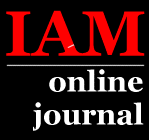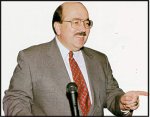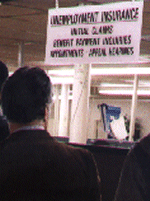
Realted Stories

Reforming Unemployment
International President Tom Beffenbarger
says that state governments need to take a hard look at their unemployment
insurance systems to make sure they are doing the job.
.

Unemployment Insurance: More
Than Just a Benefit:
Unemployment Insurance Stops Recessions
from becoming depressions
.

Unemployment Insurance:
Will it pay the bills? A laid off
IAM member's experience.

Using Unemployment as a Weapon
Employers have traditionally used unemployment to drive down wages, divide workers, and undermine unions.

Resources & Contacts
How you can help effect unemployment reform.
Get the Video
Order "Reality Checks" a free IAM-produced video that explores the current state of the nation's unemployment insurance system.
Email your order to IAM Communications
Director Rick Sloan at rsloan@iamaw.org
or call the ommunications Department. 301-967-4520.
The Different Flavors Job Loss
There are different types of unemployment, caused by different factors. Understanding the causes of unemployment is vital to combating it.
Frictional unemployment is caused by the normal, everyday workings of the economy. In good times and bad, people quit jobs to move or seek other work; shortages develop for raw materials or supplies and businesses falter or close down.
Seasonal unemployment changes with the changing seasons. For example, millions of construction jobs appear and disappear as the season for outdoor work begins or ends. Such changes are so regular and predictable, the Bureau of Labor Statistics routinely publishes "seasonally adjusted" unemployment rates.
Cyclical unemployment (perhaps the most widely recognized type) is generated by swings in the "business cycle:" depressions, recessions, recoveries and expansions.
Structural unemployment results from deep, long-lasting changes in the composition of the economy: for example, major cuts in defense spending; the exodus of businesses from the inner city or the collapse of the steel industry. Addressing structural unemployment requires such active labor market policies as retraining and job placement programs, and targeted capital investments.
An Alternative Definition of Unemployment. The "official" Unemployment Rate is only one possible definition of joblessness, and it has significant flaws. For example, someone who works even one hour a month is counted as fully employed. And by counting only those who are actively seeking work, the official rate tends to exclude the "structurally unemployed" -- those facing the highest levels of long-term unemployment who often become discouraged and stop searching for work.
We can define economic problems
in ways that more accurately reflect the realities confronting working
men and women. Here's one such alternative definition: the Underemployment
Rate:
Contents